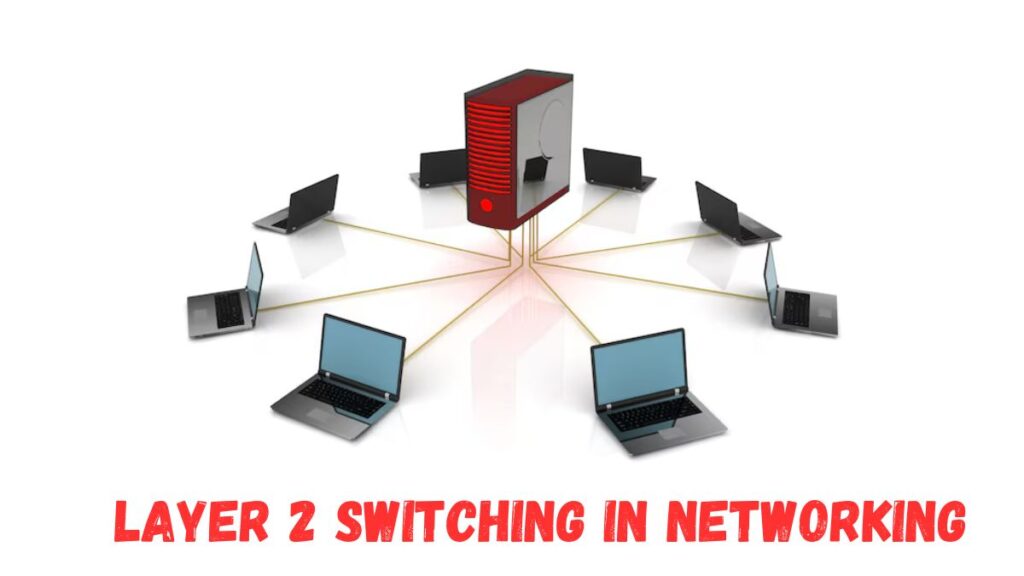Introduction
As digital communication becomes faster and more complex, the underlying network infrastructure must be equally robust and scalable. At the heart of most local area networks (LANs) lies Layer 2 switching, a foundational concept in networking that plays a vital role in how data is transmitted across devices.
Layer 2 switching is an essential component in ensuring fast, efficient, and organized traffic flow. It forms part of the data link layer in the OSI model, a framework that defines how communication should occur between computers in a network. Understanding Layer 2 switching is key for IT professionals, network engineers, and anyone looking to optimize digital communication within local networks.
This article explores the fundamentals, advantages, challenges, and real-world applications of Layer 2 switching in networking.
Table of Contents
-
What Is Layer 2 Switching in Networking?
-
How the OSI Model Relates to Layer 2
-
Key Functions of a Layer 2 Switch
-
Layer 2 vs Layer 3 Switching
-
MAC Address Tables and Switching Logic
-
Switch Types and Layer 2 Devices
-
Layer 2 Protocols and Standards
-
VLANs and Layer 2 Segmentation
-
Spanning Tree Protocol (STP)
-
Advantages of Layer 2 Switching
-
Limitations of Layer 2 Switching
-
Layer 2 Switching in Enterprise Networks
-
Security Considerations in Layer 2
-
Troubleshooting and Optimization Tips
-
Future of Layer 2 Technology
-
Frequently Asked Questions (FAQs)
-
Conclusion
What Is Layer 2 Switching in Networking?
Layer 2 switching refers to the process of forwarding data frames based on MAC (Media Access Control) addresses within the data link layer (Layer 2) of the OSI model. It is performed by devices known as Layer 2 switches, which are commonly used in local area networks (LANs) to connect computers, printers, servers, and other networked devices.
Instead of using IP addresses like routers, Layer 2 switches use MAC addresses to decide where to send the data. This makes data transmission much faster in local networks where MAC address information is readily available.
How the OSI Model Relates to Layer 2
The OSI (Open Systems Interconnection) model comprises seven layers that define how data is transmitted and received over a network. Layer 2, the Data Link Layer, is responsible for node-to-node data transfer. It ensures that data transferred between two physically connected devices is reliable and correctly formatted.
Within Layer 2, two sublayers exist:
-
Logical Link Control (LLC): Manages data communication and flow control.
-
Media Access Control (MAC): Handles physical addressing and access control to the network medium.
Layer 2 switching focuses on the MAC sublayer, utilizing MAC addresses to direct traffic efficiently.
Key Functions of a Layer 2 Switch
Layer 2 switches perform several critical functions within a LAN:
-
MAC Address Learning: Switches learn the MAC addresses of connected devices by examining incoming frames.
-
Forwarding and Filtering: Based on the destination MAC address, the switch decides whether to forward or filter the frame.
-
Loop Prevention: Through protocols like Spanning Tree Protocol (STP), switches prevent network loops that can cause broadcast storms.
-
Broadcast and Multicast Handling: Efficiently manages broadcast and multicast traffic to reduce congestion.
-
Segmentation: Divides networks into segments to reduce collision domains and improve performance.
Expand your knowledge and check out more posts on our blog!
Layer 2 vs Layer 3 Switching
Understanding the difference between Layer 2 and Layer 3 switching is key:
| Feature | Layer 2 Switching | Layer 3 Switching |
|---|---|---|
| OSI Layer | Data Link Layer | Network Layer |
| Uses Address Type | MAC Address | IP Address |
| Primary Function | Forwarding frames in a LAN | Routing packets across networks |
| Speed | Faster (lower overhead) | Slightly slower (routing logic) |
| Device Example | Ethernet Switch | Multilayer Switch or Router |
Layer 2 switching is best suited for LAN environments, while Layer 3 switching is used for routing traffic across different networks.
MAC Address Tables and Switching Logic
The MAC address table is the brain of a Layer 2 switch. When a frame enters a switch port, the switch reads the source MAC address and records it along with the corresponding port number.
-
If the destination MAC address is known, the switch sends the frame only to that port.
-
If unknown, the switch floods the frame to all ports except the one it came from.
Over time, the MAC address table builds a map of the network, enabling efficient communication.
Switch Types and Layer 2 Devices
Layer 2 switches come in various forms:
-
Unmanaged Switches: Plug-and-play devices with no configuration needed.
-
Managed Switches: Offer configuration, monitoring, and traffic control options.
-
Smart Switches: Offer some management features but not as advanced as fully managed switches.
These devices are essential for organizations of all sizes and are often used in combination with higher-layer devices for optimal performance.
Layer 2 Protocols and Standards
Several protocols and standards govern Layer 2 switching:
-
IEEE 802.1D (STP): Prevents loops in the network.
-
IEEE 802.1Q: Defines VLAN tagging for frame separation.
-
Ethernet (IEEE 802.3): The most common Layer 2 protocol in use today.
-
Link Aggregation (IEEE 802.3ad): Combines multiple links for increased bandwidth.
These standards ensure interoperability between devices and vendors.
VLANs and Layer 2 Segmentation
Virtual LANs (VLANs) allow network administrators to partition a LAN into smaller, isolated segments. VLANs improve:
-
Security: Users on separate VLANs can’t directly communicate without routing.
-
Performance: Broadcast traffic is limited to within the VLAN.
-
Flexibility: Devices can be grouped logically rather than physically.
Layer 2 switches assign VLANs based on port, MAC address, or protocol.
Spanning Tree Protocol (STP)
STP prevents loops in a network where multiple switches are connected. Loops can cause broadcast storms and network failures.
STP works by:
-
Identifying redundant paths.
-
Disabling links that could form a loop.
-
Automatically reactivating a link if the active path fails.
This ensures fault tolerance and reliability in larger Layer 2 networks.
Advantages of Layer 2 Switching
High-Speed Data Transfer
Layer 2 switches operate at wire speed, forwarding data quickly based on MAC addresses.
Low Latency
Since no IP lookup is needed, latency is significantly reduced.
Efficient Bandwidth Use
Switches forward frames only to the destination port, preserving bandwidth.
Scalability
Layer 2 switching can support hundreds or even thousands of devices in enterprise environments.
Simple Setup
Plug-and-play with minimal configuration required (especially unmanaged switches).
Want to hear more tips? Please look at our page for more informative and helpful blog posts.
Limitations of Layer 2 Switching
While Layer 2 switching is efficient, it has drawbacks:
-
Limited Scalability Across Subnets: Can’t route between IP networks.
-
Security Risks: Vulnerable to attacks like MAC spoofing, ARP poisoning, and broadcast storms.
-
Loop Risks: Requires STP or similar to prevent disruptions.
-
No IP Awareness: Switches lack understanding of IP-level issues like congestion or route optimization.
Layer 2 Switching in Enterprise Networks
Large enterprises use Layer 2 switching for core LAN infrastructure. Common applications include:
-
Departmental Network Segmentation: VLANs to isolate HR, Finance, and Engineering.
-
Access Layer Connectivity: Connecting end-user devices to the broader network.
-
Redundant Topologies: Using STP for high availability and fault tolerance.
-
Link Aggregation: Bonding multiple ports to enhance throughput.
Layer 2 switches are often paired with Layer 3 routers for inter-VLAN routing and WAN connectivity.
Security Considerations in Layer 2
Security is a concern at Layer 2. Best practices include:
-
Port Security: Restricts which devices can connect to which switch ports.
-
Dynamic ARP Inspection (DAI): Prevents ARP spoofing.
-
DHCP Snooping: Protects against rogue DHCP servers.
-
VLAN Hopping Prevention: Ensures devices can’t jump between VLANs without authorization.
A properly configured Layer 2 network can be both fast and secure.
Troubleshooting and Optimization Tips
Common issues in Layer 2 networks include:
-
Broadcast storms: Check for loops and STP misconfigurations.
-
MAC address table overflow: Increase table size or reduce churn.
-
Unicast flooding: Investigate unknown MACs or expired entries.
-
Performance bottlenecks: Use link aggregation and VLANs.
Use tools like ping, traceroute, and switch CLI diagnostics to isolate problems.
Future of Layer 2 Technology
Despite growing Layer 3 and SDN (Software Defined Networking) trends, Layer 2 remains essential:
-
Edge Computing: Devices close to users still depend on Layer 2 speed.
-
IoT: Lightweight sensors and controllers use Ethernet and MAC addressing.
-
Campus Networks: Layer 2 switches continue to power core infrastructure.
Hybrid designs with Layer 2 at the edge and Layer 3 in the core offer the best of both worlds.
Frequently Asked Questions (FAQs)
1. What is Layer 2 Switching in Networking?
Layer 2 switching is a method of directing data within a local network using MAC addresses. It operates at the data link layer and is key to efficient LAN communication.
2. Is Layer 2 switching better than Layer 3?
Layer 2 switching is faster and simpler for local networks, while Layer 3 provides inter-network routing. Both are best used where appropriate.
3. Can a Layer 2 switch route traffic?
No, traditional Layer 2 switches can’t perform IP-based routing. You need a Layer 3 device or multilayer switch for that.
4. What protocols do Layer 2 switches use?
They use protocols like Ethernet (802.3), VLAN tagging (802.1Q), and STP (802.1D) for traffic control and loop prevention.
5. How does a Layer 2 switch learn MAC addresses?
By examining incoming frames and storing source MAC addresses in a table, associating them with the port they arrived on.
Conclusion
Layer 2 switching is a fundamental pillar of modern networking. Its speed, simplicity, and efficiency make it indispensable in LAN environments. Whether you’re managing a small office network or a sprawling enterprise infrastructure, understanding Layer 2 switching empowers you to build faster, more secure, and more scalable systems.
By mastering its features—MAC addressing, VLANs, STP, and more—you not only enhance your technical knowledge but also ensure that your network performs at its best today and into the future.
Let me know if you’d like a formatted PDF version or a version tailored for PowerPoint or technical training sessions.







